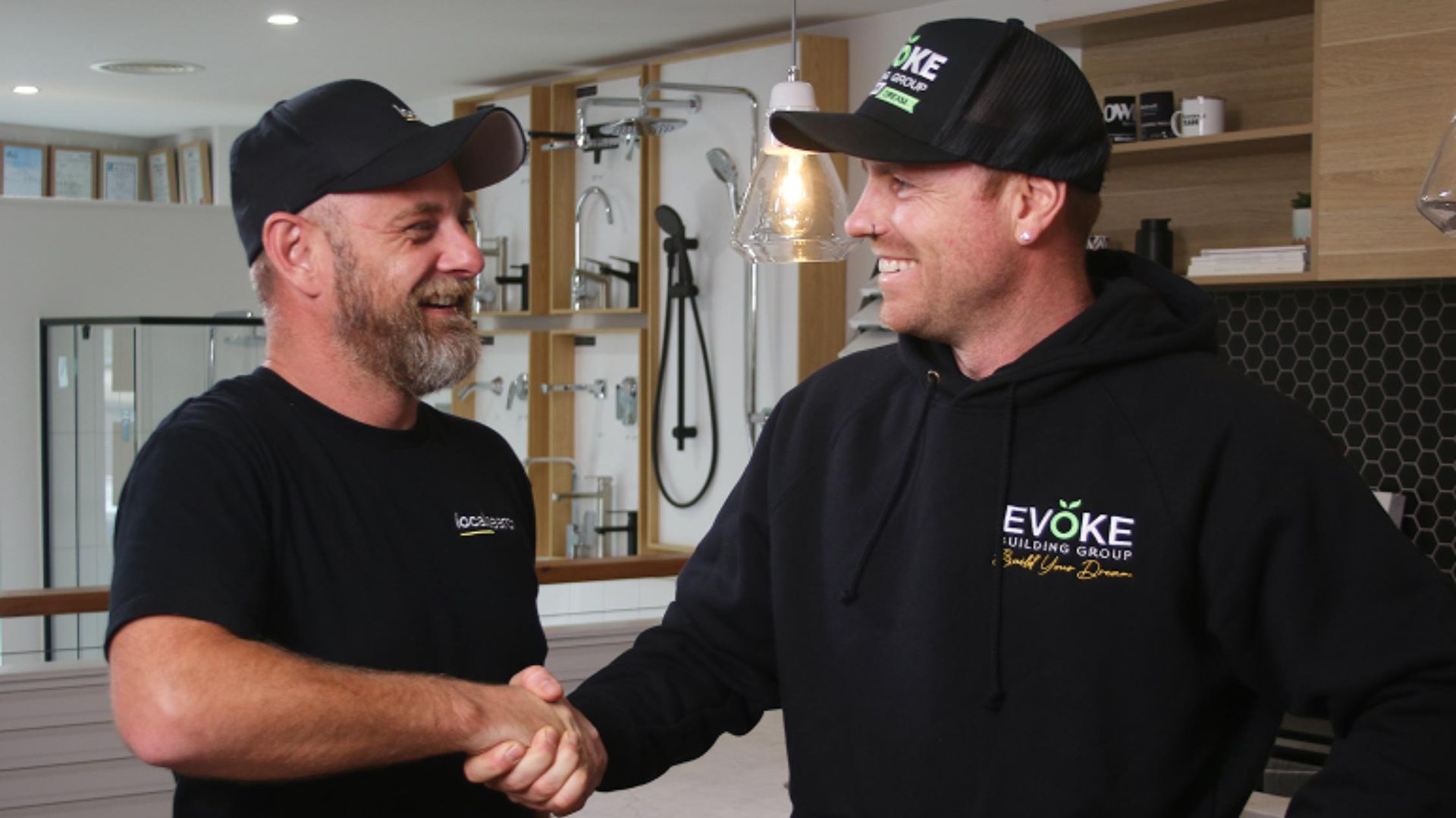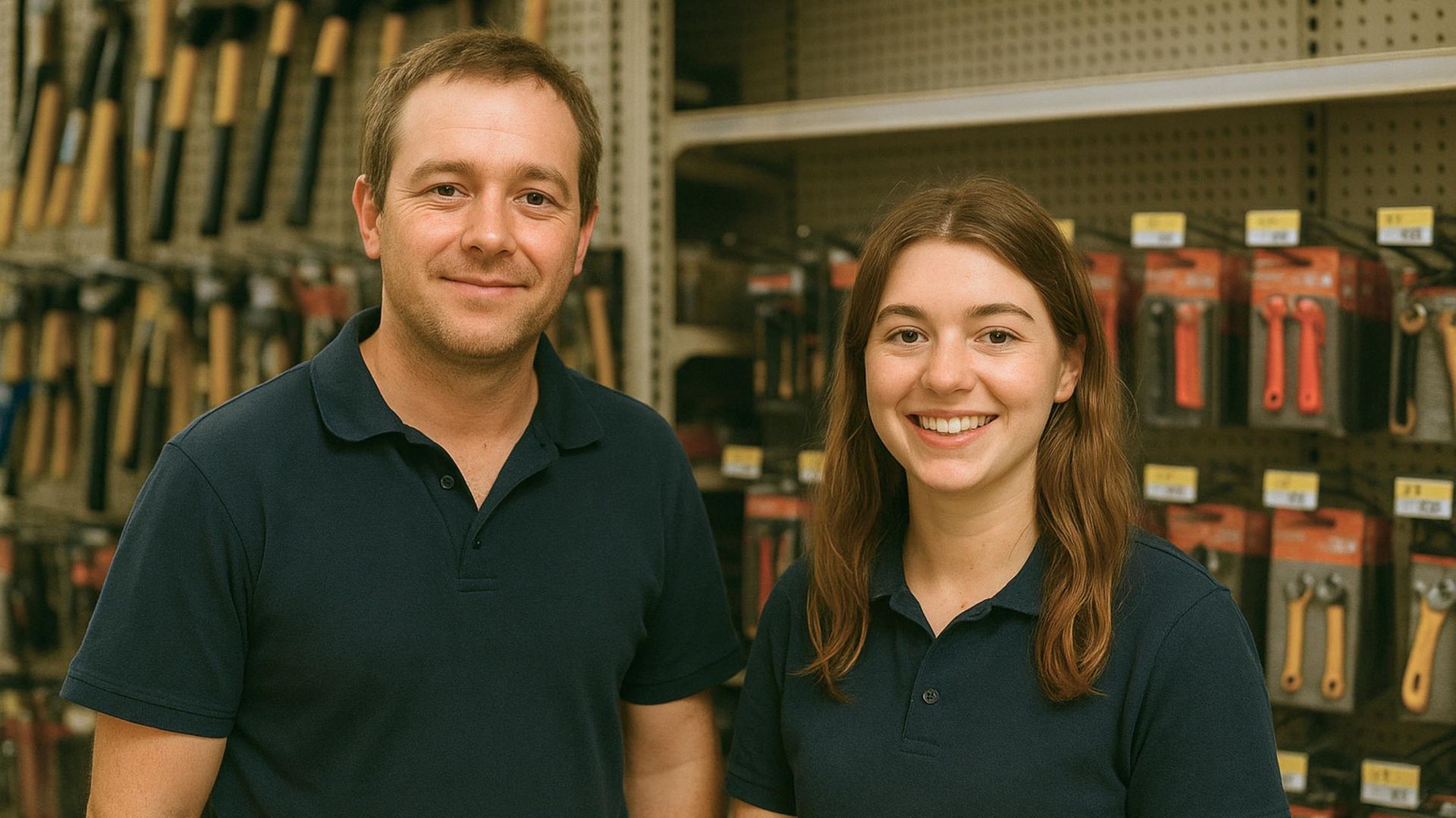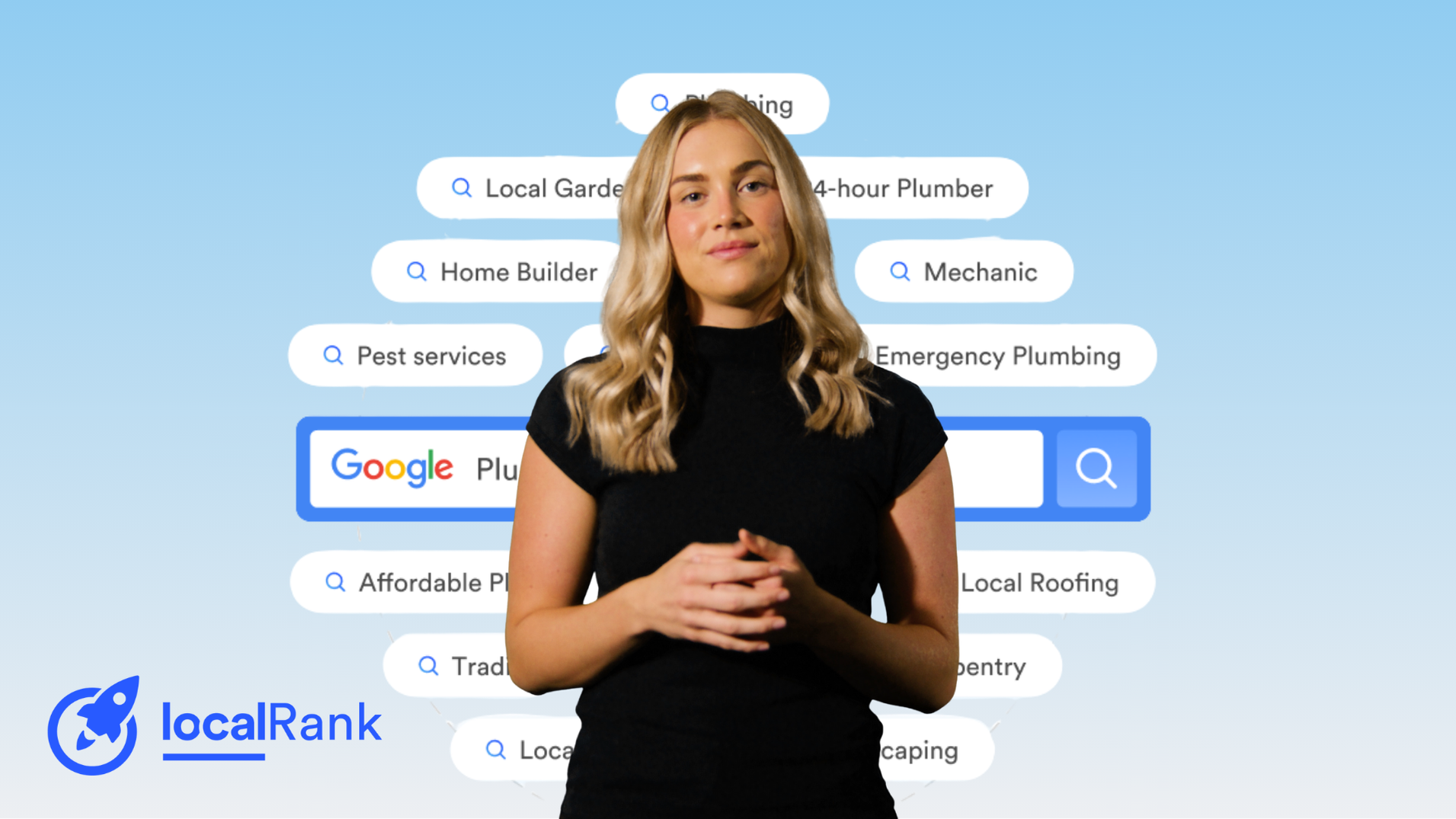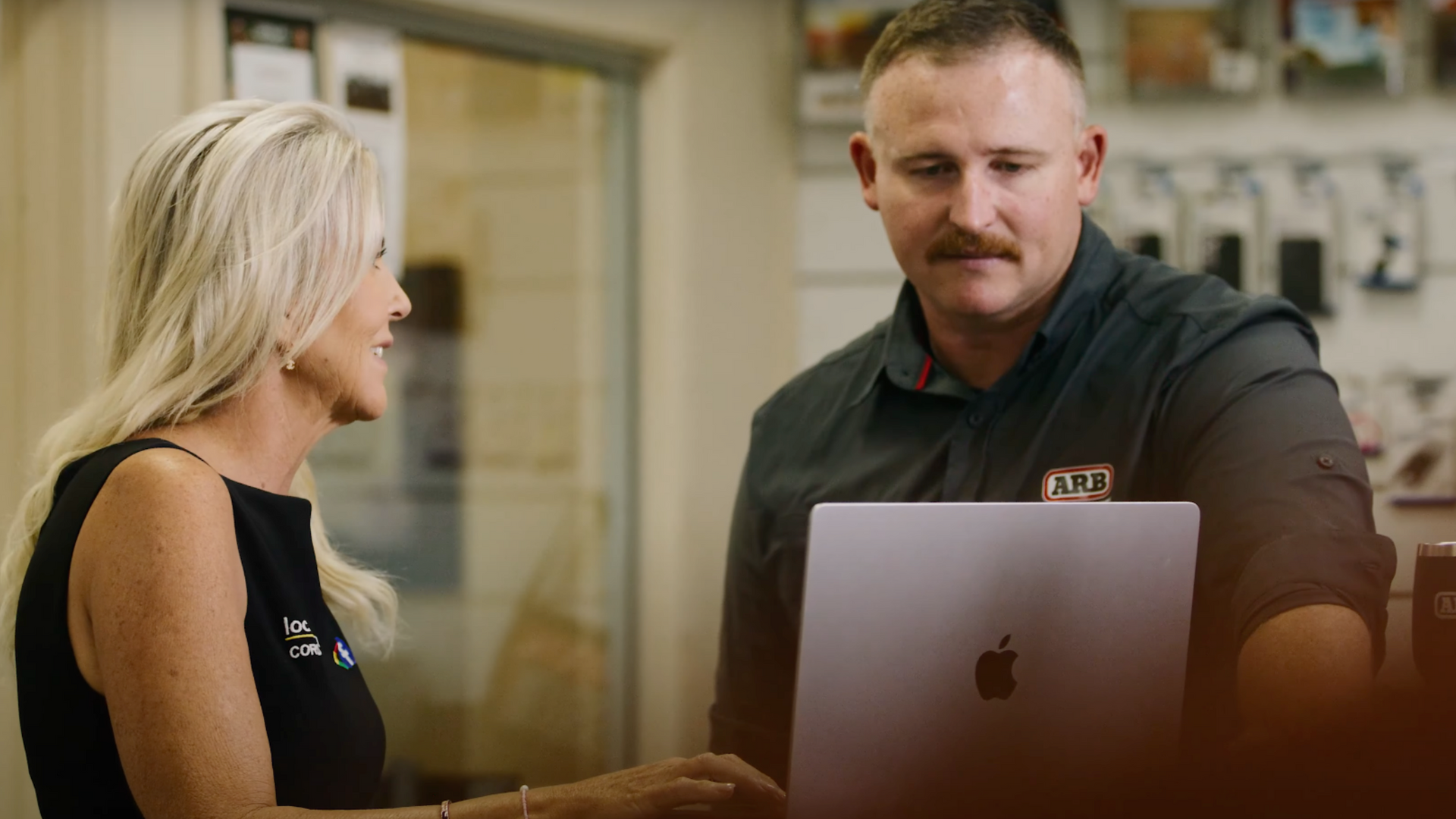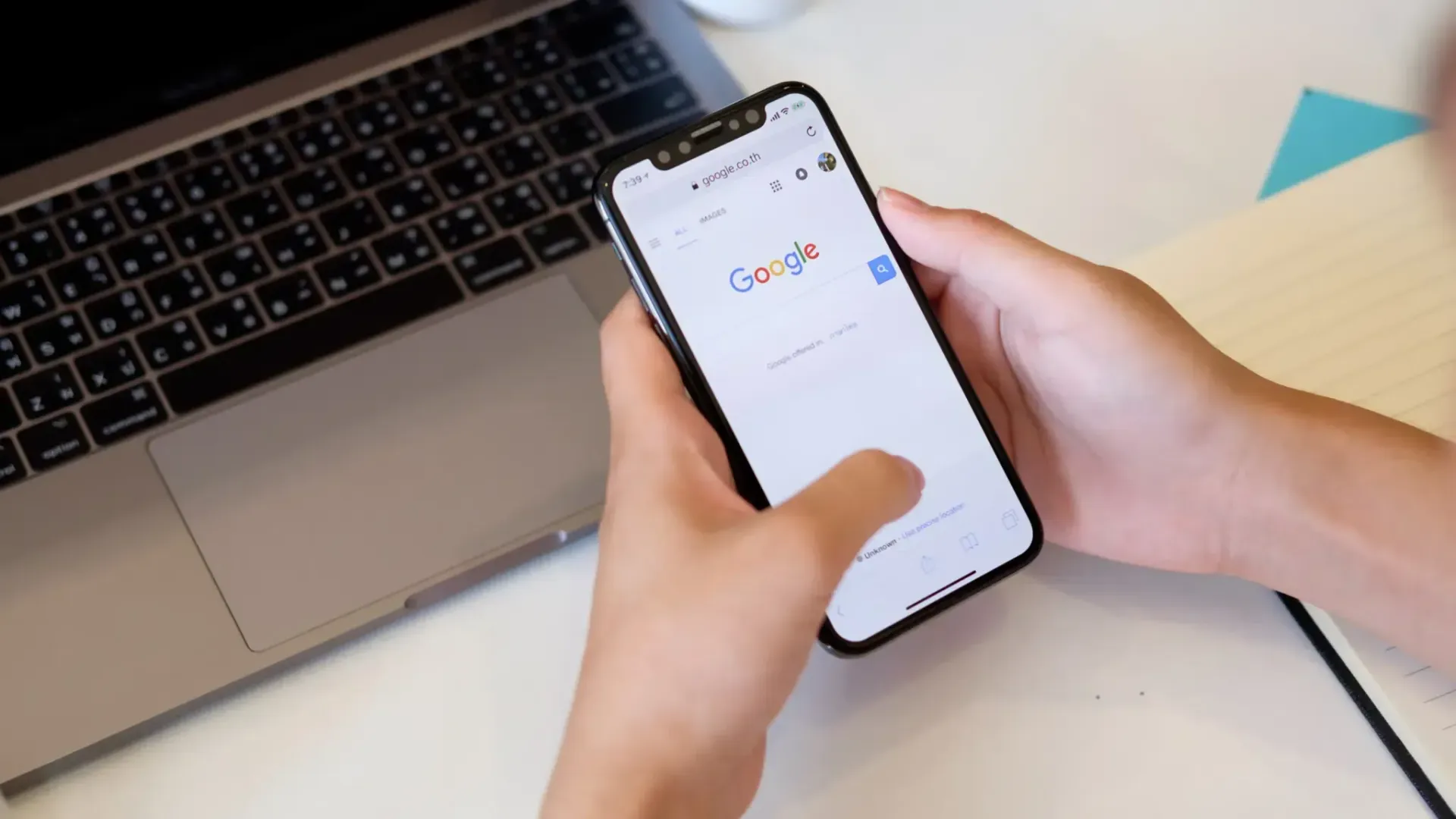MUM’s the Word on These 2022 SEO Trends — with Mike Andrew
In this article
Related Articles
Tips to grow your business
from the experts
Sarah: A lot can happen in six months in SEO.
Katrina: So we have magic Mike, Andrew, head of SEO, Localsearch back to share with you why your website rankings may be changing.
Sarah: As well as what to get on top of now to ensure you rank well in the next six to twelve months.
Katrina: Let’s see what he has to say.
Katrina: Well, welcome back, Mike.
Mike: Thank you, Katrina.
Katrina: I think it’s been about six months since we last spoke to you about the Core Web Vitals update.
Mike: Yes, it has been that. Yeah, it’s nice to be back.
Katrina: And what sort of impact are you seeing this having on websites?
Mike: To be honest with you, we haven’t really seen big movement in a lot of the impression share in Search Console for instance, and in tracking. And that’s because a lot of websites don’t do too badly on desktop performance. So there was no real big impact on it. I mean, there’s a lot of factors that do impact speed load, of websites. And we can go through that, but we saw more of an impact on the mobile version because Google moved to mobile indexing some time ago, mobile first indexing, and then they changed it to just a mobile indexing, which means that the actual spider that does the crawling is the mobile spider. So it looks at a lot of issues like mobile, responsiveness, how the website performs on a mobile device, how it loads, what the accessibility factors are with regards to font colour, and, the difference between the font colour and the background of the website.
There’s four elements really in the, the Core Web Vitals, speed requirements. Probably one of the ones that we don’t discuss a lot of is time to first bite. And that is where the browser first calls the website from the server. So we do know that Google uses that basically as a prime ranking factor. So there are the four and Google only requires two of the four Core Web Vitals, speed requirements to be met. And it doesn’t give you a reward for matching all four, but obviously if you can, it just means the site performs a lot better. So to answer your question no, we haven’t seen a real impact of the desktop, algorithm coming in.
Sarah: I guess, for a lot of businesses out there, they may be thinking, okay, so it was all about desktop back in the day and it kind of switched to mobile and now it’s back to desktop and they might be confused if they’re trying to do it themselves. Are they better off focusing on the mobile or the desktop, or is there something they can do that kind of universally works?
Mike: Well, It’s only really one element of SEO. I, I mean, when you, you look at the three elements that we work on, one is the technical aspects of a website. Second one is the on page off page optimisation of the site. And the third one is the content structure. I mean, at the end of the day, content really still is the king because the page experience algorithm that came out with it as well, also looked at the relevancy of content to the consumer search. So if a consumer is searching for a keyword or a product or service, if the content on the website matches the relevancy of that to a hundred percent, if the site is slow, slightly slower than a competitor, but if the content is matching it to a hundred percent, Google’s still going to serve that content to the consumer. So it’s only one element of the whole SEO strategy on a website. So if you were trying to do it yourself, it could be a little bit of a nightmare because you don’t know which element it is that is causing, say a cumulative layout shift or a largest Contentful pain issue. You don’t know which element on the website is causing it. So we know because we can work that out and therefore then we can put steps into fix that, but trying to do it yourself, you could probably get into more trouble than what, what it’s worth really, to be honest with you.
Sarah: I know we’ve been talking about some other things that Google has been up to in the last few months. What are we kind of looking at that Google is doing that website owners are starting to be like help Mike.
Mike: What’s happened over the last, six to twelve months is there’s been more changes to the Google algorithm in the last twelve months. I think then there had been in the previous twelve months and it was all around really the Core Web Vitals, which was the security issue. So moving sites to HTTPS, there was the page experience algorithm and how the page would relate to the one hundred percent relevancy to the consumer search because Google’s a solution provider. So what it wants to do is find the best solution to the question that’s answered. So if it thinks that your site content wise is the best, then it’s going to serve you higher. Now, if you find that your speeds are a little bit lower, it’s kind of going to compensate to a certain extent. But what we did see happen was sites that had been refreshed or rebuilt in the last twelve months.
We’re starting to overtake sites that hadn’t been freshened and Google algorithm looks for that. And one of the things we look for is we go into Search Console and we look for what we see as 304 results. A 304 is a not modified result. So when the Google spider comes in and it does a search and it doesn’t go through the whole site every time it, it limits itself because of those crawl resources. So what we find is a 304 means a page not modified. So if you go back through Search Console and you have a look at all this information, you can see where one page comes up all the time and it might go back six months or so, and you’ll see, not modified, not modified. So that means to Google it has no real value because there’s not been modified. So there’s no update to the information.
And that’s why we’re seeing sites that are rebuilt if you like or have content modifications or are constantly being updated, do have an edge because when the spider comes in and it’s seeing changes, Google likes to see updates on websites. It likes to see new content, new information, which is where blog content can make a big difference to that because in the blog content, if you structure it correctly and you aim it at a certain position because you should never add a blog post into the site just without a strategy behind it. So where do I want it to rank? What do I want to convey to the consumer? And then more importantly, how is Google going to understand the intent of the content on the page and in building into that content is links to it, internal pages. And what it does is Google follows the links. And if you can modify the page, it’s linking to, by updating it in some way, shape or form, just making a change and a minor change by changing a photo is not enough. But if you add more content into it, so you expand that content. What happens is Google refreshes that and it looks at that content update and says, the site’s not abandoned. It’s just not sitting there. There is work being done on it. And it is being updated constantly.
Sarah: I suppose it comes down to what we always talk about. If the consumer or the whoever’s going to be reading it, that you want to read, it likes it’s engaging with it. Google’s going to like it.
Mike: Absolutely. And it’s even more important for what we call officially known as the medic update, but everybody shortens it to your money or your life sites. Now they’re the ones that really do get the impact the most because they’re the ones that when you, you go to that website and you interact with it, it has the ability to change your life. Think Google’s going to treat it with a lot more suspicion. So it’s going to want to understand that the people who are working in that business, the people who are, are writing the content are experts and knowledgeable in what they do. You really can’t afford to let that site go. Because if you know, you’ve got an SEO person working on Katrina’s website and nobody working on your Sarah what’s going to happen is Katrina’s, site’s going to slowly just rise to the top. And yours is either going to stay stagnant or drop and it’s not so much it drops. What happens is somebody else makes theirs better. So you then start to see this increase in the rankings. And we do know that the best place to put a dead body is on page two.
Sarah: We’re probably going to need a whole episode on this, but would you be able to touch on MUM?
Mike: MUM’s in beta testing, MUM is probably the third application of AI and the way that Google understands the relationship of content to consumer intent, the first one that came out was Burt. Burt was short form content understanding from Google, if that’s the right way to put it. So basically the best way to put it, I guess, is this way. If you had a piece of content on a page that said, old, McDonald had a farm Burt was able to interpret the content, uh, intent. So we would then be able to say, okay, I know what comes next. Now his old, old McDonald had a farm E-I-E-I-O and on that farm, he had a pig and that was the extent. So Burt was really good at short form content. They then came out with Smith. Smith was then really good at being able to understand long form content.
Mike: So basically content that was, you know, fifteen hundred, two thousand words long. And the opening paragraphs meant a lot there because it then enabled Smith to be able to understand the intention of that content. So what was the content doing on the page? What was the aim for? What was the intent and where did it want to be found? And Smith was able to take that to the next level, with that particular sentence and then complete the next step and the next step, because it had an understanding of the relationship of words. So a sneaker became a sand shoe, became a runner, which were essentially the same thing. And now MUM takes that to the next level. And this is where the content evolution is going to be really, really important on websites. Let’s say for instance, um, my intention at some stage, and this is Google’s example of it is I want to climb Mount Everest.
Mike: If I put that into Google at the moment, it’s going to give me a whole range of probably options and hotels and things like that. And, and it’ll tell me how to do it and everything like that. But what it can’t do is tell me everything I need to actually do that. What should I wear? What shoes do I need? It’s not able to understand that. What MUM will do is to take that to that next level. In fact, more than that three level. So what it will be able to do, it’ll be able to tell me what I need to do to climb Mount Everest, how to climb Mount Everest, what shoes I need to wear, what underwear I need to wear. What’s the best clothing to wear. What’s the best time of the year to do it all out of that one question I want to climb Mount Everest.
Mike: MUM is more of a natural speech style. So one of the things I do first of all, is I take all content off a page and I read it aloud because it’s got to have natural phasing that enables the voice bot to be able to understand there is speakable content on that page because if you are asking Siri or you’re asking Alexa, or either Google assistant for information on anything at all, you want to be able to have your website be able to be, um, optimised for voice content. And you can’t do that when the paragraphs are too close together, because the way the voice bot works, it looks for natural speech rhythms. So it’s changing the way the content is written. So I guess in the next six to twelve months, probably alongside with the extension of the call, web vital stats, content is going to be changing in the way that Google interprets content, content on a website. So that means a lot of websites are going to have to undergo content changes in a big way to be able to match what Google wants and where it wants to go. Because now it’s all about credibility. It’s all about how credible that company, that content, that business or that person is within that industry.
Katrina: Okay. So I’m sitting here and I’ve got a website and looking into the, to the rest of this year. What should I be concerned about?
Mike: I think what you’ve got to be concerned about is how Google interprets your site. Is it considering your site to be an authority site in the, in the sense of your product or your service that you offer? How does Google relate to you? Where does it rank you? There are two areas that Google looks at. One is an automated situation where the Google spider will come in and it will, if it finds a website that it thinks is maybe a bit dodgy or not quite as good as it should be, it’ll flag it to a human being. So there’s two ways that Google can penalise you. One is through the, algorithm or the Google spider that comes in. The second one is the quality assessor that Google uses. So there’s a human being looks at the site. And if they think the site is missing, quality, content, structure or any of those issues, we talked about, you know, the three errors, technical mistakes, technical issues, content on page off page optimisation, et cetera, then it will drop you in the rankings.
Mike: And sometimes it is a little bit hard to work out which one it is, when you do an audit on a website. Although today we can look at a website. Now we can tell you whether it’s going to rank highly or not. And I would be really starting to look at the content on the site, how it performs. Am I dropping in rankings? I used to rank number one, but now I’m number three. I’m number four. We do see that happen. I’d really be going through your website now and I’d be looking at cleaning it up where you feel there is, some content that’s too short for instance. So there’s another question too, that comes up. What is good quality content and how long should it be? So basically if you’ve got, you know, less than five hundred words on your blog post for a non non money on your life site, I’d probably look at expanding that up and, and adding a minimum of six hundred words on it.
Mike: So there is depth to the content, but more importantly, Google says that if in five or six hundred words, you can relay the intent and answer a question or provide a solution to a question. Google will rank you as highly as opposed. It has two thousand words that might fluff around a lot. So it’s going through and removing any fluffiness, looking at writing your content in a more natural term, natural way. So a natural speech rhythm, like we’re talking now, and then changing that content around, looking at refreshing your pages. If you haven’t been in there for a while, rewriting some of your content, I’d also look at probably getting good content writers like you, two ladies involved, you know, so I can use your expertise in some areas because not everybody is a writer, not everybody understands how to do this. And a lot of people too busy working in their business to worry about their website.
Mike: However, the two go hand in hand, you get a really good performing website that ranks really well organically. You’re going to generate business and that’s what you should aim for. So I really would be starting to look at three key areas. One is the technical issues on your site. How fast does the site load, now to check the Core Web Vitals, what you can do is you can pop your website into the page speed insights, which is a free website from Google that will test the speed on both mobile and desktop. If you get a fail on both areas, then you know, one issue is going to hold you back. And that is the speed of the site. So you need to then look at the technical issues and look at the page structure. You know, things like sliders, videos that slow it down images, you know, making sure they’re compressed enough so that they don’t take up time.
Mike: You can use things like pre render and prefetch scripts in the back end to for third party coast like Google Analytics and Tag Manager and all those things. You can add that into the, the head of files to load those things up. Then I’d be looking at the way my on page, structure works. And remember that each page is valuable. It’s not just the website, it’s each page. So if you’ve got a ten page website, then each of those ten pages can rank independently. Number one, if you’ve got a thirty page, you’ve got thirty, you know, more chances of ranking in the Google Index. And you have, if you’ve got ten, now this is another thing we’re getting into with content. I hope we’ve got time to do this, but there’s always been a lot of discussion about hiding content underneath tabs.
Mike: So when you roll over it with your mouse, the content comes up, right? I have for a long time, been a strong believer that you shouldn’t hide content under a rollover, a mouse, the Google spider does not have a mouse rollover function. So it doesn’t see it. When it comes into the page for goodness sake, give you an example. We had a brand new website that we worked on in December that wasn’t ranking at all the content wasn’t being consumed. They had all this content on the homepage hidden. We took the tabs out and we put that content on the front page. So it was easily digested by Google. Next thing you know, it’s ranking really highly. So the proof is in the pudding, you need to update your website. So you don’t have a car that you don’t get service for ten years. If you do, it starts to break down. That’s what’s happening now with websites that have been around for a while, just technically their limitations and that needs to be fixed.
Katrina: It really does sound that a lot of it comes back to content at the moment. Like you always say content’s king.
Mike: Oh, content is king. Yeah. And there’s this belief, from a lot of people that I have, I need to have a ten page website, nothing more than that yet the factor is Google likes big websites, you know, websites that have a lot of content that are aimed at a, a product or service that you, that you have, content. Yeah, absolutely Katrina. Yeah. I mean, moving forward, content’s going to be so valuable to understanding or getting Google to understand what the intent of your content is. And it doesn’t matter what that content is or what your product or service or business that you’re promoting. It still becomes really, really important that that content is online. Not brochure written, not waffle, straight to the point, content answering the consumer intent.
Sarah: So for anyone who is sitting there thinking, I don’t know how to do any of that. I don’t have time to do that. Or they’re completely baffled. It’s completely understandable. That’s why Mike does what he does. So if you do have any questions, there is no such thing as a dumb question, especially in SEO, drop us a message at The Help Me Grow My Business Podcast, Instagram or Facebook, Katrina and I are on there will get you in contact with Mike or one of our SEO specialists or someone who can answer your question. Because as Mike has said…
Mike: Content is king. How to act.
Sarah: Amazing. Well, as always, Mike, you have taught both Katrina and I, a lot of things. So we assure it has helped a lot of business owners out there.
[Laughing]
Katrina: So much, we learn so much every time you come in and chat to us.
Mike: Oh, well, thank you very much for your kind compliments. I appreciate that. And I got to say you two are wonderful writers and I just love working with your content. I really do.
Katrina: Thank you.
Sarah: Well you very much. Keeping that in there.
[Laughing]
Sarah: All right. Well, thank you again, Mike. And again, if you have any questions, drop us that message and we will get you the help you need.
Mike: Perfect. Thank you, Sarah. Thank you. Katrina.
